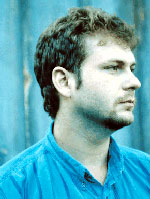 Jeff Thurston at Vector One has another great post speaking to one of his passions - sustainability.
Jeff Thurston at Vector One has another great post speaking to one of his passions - sustainability.
He touches on the issues of infrastructure and zoning - and here, I wholly agree, we need to rethink our approaches to land use and infrastructure.
In antiquity, our approaches were geared toward communities, where people were able to work, live, buy, sell, trade, interact, worship, and essentially conduct all the activities they needed on convenient terms - typically one could traverse a small town on foot with ease, finding grocers, butchers, bakers, and any other needs handy. With the introduction of factories and mass production, along with mass transit, such as trolleys and buses, manufacturing and heavy industry was able to make an upsurge.
With the automobile, our definition of "convenience" began to shift, and our towns and cities became increasingly pedestrian-unfriendly. Add to this, the increasing pressures and consequences of the heavy industry and other uses which were less compatible with residential use, which ultimately led to segregation of land uses.
Ultimately, folks escaped from the cities, only to bring the cities with them, in the form of row after row of identical, cookie-cutter subdivision homes, spread over mile after mile of what had once been prime farmland.
Consequently, the pendulum has swung, from small, intimate community, to the scattered, impersonal, suburban sprawl of today. Perhaps the time has come for the pendulum to swing back - we have seen the rise of gasoline costs, and along with it, an increase in telecommuting and infrastructure alternatives.
The economic and cultural drivers are in place, however the regulatory and governance aspect still lags behind - with reforms to zoning and land use planning needed, along with different models for dealing with infrastructure relating to the "convenience factor"... Here is a place where I anticipate GIS having a definite and distinct role in demonstrating the cases and scenarios for future land use and development paradigms - and along with it, principles of land conservation and open space preservation.
Resources:

 Jeff Thurston at Vector One has another
Jeff Thurston at Vector One has another 





